 Panchakarma, a well recognized system of Ayurvedic medicine has unique techniques and these acknowledged techniques underwent revision and advancements in the flow of time. Panchakarma therapies are the foremost and Kerala has made its own platform due to the immense contribution made by traditional Ashtavaidyan practitioners. By them, parallel to the mainstream - “Keraleeya Panchakarma” - a modified form of Therapies were evolved, which was well revised by various doyens of the land.
Panchakarma, a well recognized system of Ayurvedic medicine has unique techniques and these acknowledged techniques underwent revision and advancements in the flow of time. Panchakarma therapies are the foremost and Kerala has made its own platform due to the immense contribution made by traditional Ashtavaidyan practitioners. By them, parallel to the mainstream - “Keraleeya Panchakarma” - a modified form of Therapies were evolved, which was well revised by various doyens of the land.
What is Ashtavaidyan tradition of Ayurveda?
Ashtavaidyan are traditional Ayurvedic physicians of Kerala and are from Brahman (Namboothiris) community. They are masters of the eight branches of medicine from which the word Ashtavaidyan is originated. For many generations, Ayurveda in the Kerala propagated in the family’s of these eight disciples which now a days is popularly known as Ashtavaidyan Ayurveda and Ashtavaidya are considered as esteemed traditional physicians of Kerala. They wrote several books incorporating their observations and clinical experiences. "Chikitsa Manjari", "Yogamithram", "Abhidhana Manjari", "Alathur Manipravalam", "Sindoora Manjari" and "Kairaly Commentary on Ashtanga Hridaya" are some of them. They were the disciple of Vagbhata and came under his family tree also, Vagbhata was youngest among the big three’s Brihat Trayee other two were Charak and Sushruta. Vagbhata authored the famous treatises of ayurveda named Ashtang Sangraha and Ashtang Hridaya and his disciples were earlier called “Ashtangavaidyan” and later apparently reduced to Ashtavaidyan. As mentioned earlier, all the families are addressed as Moosses rather than Namboothiris, except Aalathiyoor and Kaarathol who are called Nambis. Ashtavaidyan are given a slightly depressed status perhaps because they have to examine dead bodies, perform surgical operations. However, considerable respect and place are given to them by the (Brahman’s) Namboothiris community. Owing to the slightly lower status for Moosses, they are not permitted inside Yagya Shala, a place where Yagya are performed. Kerala is in a way is fortunate to have this tradition of Guru Shishya stream survived.In Kerala, Vaidya not practising ayurveda strictly on the lines of Vagbhata are considered Aryavaidyan and popular Vaidya of Varier family of Kerala is using the designation Aryavaidyan with their names which shows that they are not from the families of Ashtavaidya. So two parallel, Ashtavaidyan & Aryavaidyan traditions or Ayurveda prevailed in Kerala. Anyway, while the rest of the country followed Charaka and Sushruta, Kerala mainly followed Vagbhata’s Ashtang Hridaya.
Popular Panchakarma therapies of Kerala
In panchakarma most of the therapies are integrated with external oleation procedures and these procedures are basically done preliminarily to the main five procedures Vaman Therapeutic Emesis, Virechan Therapeutic Purgation, Niruhan Decoction based enema, Anuvasan Oil based enema and Nasya Nasal insufflations of panchakarma. Basically Keralite Panchakarma had done advancements in different external oleation therapies only; all the other main procedures of Panchkarma are named and practised like the same in rest of India.
Pizhichil (Parishek)
Parishek type of Sweden is called Pizhichil in Malayalam ('zh' is pronounced as 'd'). Sushruta in twenty fourth chapter of Chikitsa Sthan described the details with various formulations for the same. Sushruta recommended Parishek for Chronic Fatigue Syndrome, Vata disorders, Fractures, Wounds, Traumatic injuries & burns. Charak in twenty ninth and Ashtang Hridaya in twenty first chapter of Chikitsa Sthan recommended the use of Parishek in various vata disorders.
Procedures and uses
Pizhichil’ literally means ‘squeezing’. Here, warm medicated oil is squeezed over the patient’s body from a piece of cloth that is periodically dipped in a vessel containing the oil. Each masseur uses on hand to pour the oil while massaging with the other. Medicated warm oil is used for as a continuous stream for a definite period for the whole body excluding head & neck. The masseur usually begin by squeezing oil on to the shoulders and then down the hands of the patient who sits in an upright position. This therapy consists of both oleation (oiling) and sudation (sweating). Selection of oil depends on doshic predominance and constitution of the person. This treatment is very useful for Rheumatic diseases like arthritis, paralysis, muscle spasms, sexual weakness, ageing, general weakness, nervous disorders, degenerative diseases affecting the muscles and other Vata disorders etc.
Kizhi (Pind Swed)
Kizhi means bolus (Pind). Sweden done with a bolus is called Pind Sweden and Charak described the same In fourteenth chapter of Sutra Sthan, PIND SWED described by Charak is known as Kizhi in the vernacular language of Kerala.
Procedure and Uses
Special herbal leaves or powders are mixed in oil and tied up in a muslin bag. This bag is used to massage the body or the affected parts with this special bolus after dipping it in warm oil. This treatment is for osteoarthritis, arthritis, spondylosis, sports injuries etc.
Navarakizhi or Njavarakizhi or Shashtik Shali Pind Sweden
Navarakizhi is part of the preliminary treatment prior to the main procedures of Panchakarma this is one of the most important among Keralite Panchkarma. This fomentation technique makes use of an indigenous rice variety Navara or Njavara or Shashtik, and Kizhi is Pind Sweden so putting both the words together makes it Navarakizhi. Vagbhata in Ashtang Hridaya’s twenty sixth chapter of Sutra Sthan described the procedure of Shashtik Shali Pind Sweden, in Keralite Panchkarma same is named as Navarakizhi.
Procedure and Uses
Medicated oil is smeared on the head and body of the patient. The patient is then made to lie on a table. Pouches of Navara rice, cooked in medicated decoction and milk are soaked for a few minutes in a mixture of warm medicated decoction and milk. Temperature of this mixture is regulated depending on the tolerance capacity of the person. The body is then massaged with these rice bags, this procedure is done in seven different postures. After the treatment, the rice paste sticking onto the body is removed and warm medicated oil is once again applied on the body. Later the patient is given a bath in moderately warm water. By this process, the whole body or specific parts are made to sweat. This is performed by two to four therapists for about 60-90 minutes for a given number of days.This treatment makes the body supple and removes stiffness. It is a cardinal treatment for wasting muscular disorders like Polio Myelitis, Muscular dystrophies etc. It is very effective for Pain, rheumatism, emaciation of limbs, stroke, hypertension, sciatica, spondylosis cholesterol and certain kinds of skin diseases. It clears the obstructions, improves blood circulation, removes waste from the body, improves complexion and restores vigour. It promotes sound sleep, makes entire body strong, sturdy and well developed. It sharpens the senses and it slows down the ageing process. Besides medical benefits this wonderfully relaxing treatment leaves you glowing with health.
{mospagebreak}
Elakizhi
Ela' means 'leaves' 'Kizhi' means 'bolus' or PindThis is an innovative process of massaging the body with cloth bag filled with fried medicinal leaves like ricinus, calatropis, tamarind and more. This massage is normally done by three people. The cloth bags are warmed in medicated oils and used to massage the entire body, neck, shoulders, hand and back in different positions. This massage is normally done by three people. It helps in stimulating the nerves and in reducing pain. This is done in cases of Rheumatism, arthritis, paralysis, sciatica, spondylosis and neurological disorders. Elakizhi promotes better circulation within the affected area thereby promoting increased perspiration, which helps the skin to eliminate wastes. It also helps to tone the skin and can be very relaxing so this therapy can be done in a perfectly healthy person also to enhance his/her immunity, vitality and longevity of life. The above treatments can be offered in different combinations according to the physician’s direction. Each of these combinations gives a curative and rejuvenative effect after being undergone for definite periods and repeating at definite intervals.
Podikizhi
"Podi" means "Powder" and "kizhi" means 'bolus' or PindIn this treatment, the patient has to lie in a comfortable position. External oleation is done before starting. A bolus or Pind with herbal powder is dipped in medicated oil and then applied to the body. The temperature is maintained depending on the tolerance of the person. The main treatment is followed by an oil application. This massage is normally done by three people. This is massage has been seen to be very effective for inflammatory joint problems and primary stages of hemiplegia.
Dhanyakizhi
"Dhanyam" means "Grains" and "kizhi" means 'bolus' or Pind This particular treatment drives away the stiffness of the body. Here the patient is made to lie in a comfortable position. External oleation is done before starting the treatment. A pouch with processed grains is then dipped in medicated oil and applied to the body. Again, there will be an oil application after the main treatment.
Thalapothichil (Mastishkya)
Sushruta in twenty second chapter of Chikitsa Sthan and in thirty sixth chapter of Utara tantra described the procedure of Mastishkya and Thalpothichil is same in Kerala Panchkarma. Sharangdhar in eleventh Chapter of Utarakhand elaborated the lepa formulations to be applied on head for hair disorders and other disease also. This is a special procedure widely practiced in Kerala. Drugs like amla etc. are cooked in medicated liquids like buttermilk etc. and made into fine paste. The healing properties of the herbs also calm down the nervous system and rejuvenate the person.
Procedure and Uses
To start the treatment, the person sits on a chair, well relaxed. Mild massage is given on the head with any suitable medicated oil. Selected medicinal herbs, thoroughly ground and made into fine paste, is then thickly applied on to his scalp. The head is then covered up with leaves, usually banana leaves, to form a perfect mask. A small hole is made in the centre of the covering and medicated oil is kept there. This is done to allow the medicines to stay on and function well. The mask remains on the person's head for almost 40 to 50 minutes giving wonderful relaxation to the mind, then oil and the paste is removed and another mild massage is given on the head. The effect of the medicines calms down the nerves, relieves mental tension, increases the person's memory power and improves his sleep pattern. Herbs and fruits such as gooseberry, henna, asparagus, moringa, guggul, lotus seeds, sandal, nut grass tuber etc. are used in the treatment. They are first moisturized in buttermilk before being grinded to a paste form. The paste thus obtained becomes a rich blend of various cooling agents. The duration and the herbs used are decided by the physician depending on the type of disease, age, body constitution of the person etc. Treatment is renowned for its ability to heal problems related to the head and neck regions. Alzheimer's disease, psychosis, Depression, Hyper active conditions, mental retardation, insanity, epilepsy, migraine, Headache, certain psychosomatic diseases, arthritis, headache, insomnia, hyper tension, premature greying and hair falling, sinusitis, certain skin diseases of the scalp, burning sensation in the eyes, Burning sensation of body etc. are some of the most common ailments treated using this method.
Shirodhara (Shirosek)
Vagbhata in twenty second chapter of Ashtang Hridaya Sutra Sthan recommended Parishek on head in skin diseases of scalp, in twenty fourth chapter of Utara Tantra he advised Parishek on head with vata pacifying formulations in Shiro Roga. Charak in ninth chapter of Sidhi sthan, twenty sixth chapter of Chikitsa sthan and Sushruta in twenty sixth chapter of utara tantra recommended the Shirosek in Vataj and Pittaj mental disorders elaborating different formulations for the same.
Procedure and Uses
In Sanskrit language Shirodhara is composed of two words “Shiro” + “dhara”, shiro means head and dhara means flow. Ideally after Abhyanga pouring of a liquid such as decoction, medicated milk and its products, sugarcane juice, medicated oils, etc. on the forehead from a vessel hung approximately 6-8 inches above the patient's forehead in a continuous stream for a specific period is called shiro-sheka. It is also known as sirodhara. It cleans both the mind and the senses, which allows the body's natural healing mechanisms to release stress from the nervous systems. This in turn, improves mental clarity and comprehension. This procedure often induces a completely relaxing and rejuvenating mental and physical state. It deeply revitalizes the central nervous system. At times, soft music may also be used to add to the soothing atmosphere. Selection of the liquid medicine used for Shirodhara would depend upon the treatment required.Anxiety, Depression, schizophrenia, Epilepsy, Hypertension, Diabetic Neuropathy, Hemiplegia Paraplegia, Strengthens the sensory organs, Insomnia, Pre-mature greying of the hair & hair loss, Mental retardation, Paralysis, facial palsy, ptosis (drooping) of the eyelids, eye diseases, sinusitis, allergic rhinitis, neurological disorders, memory loss, hearing impairment, tinnitus, vertigo, Ménière's disease and certain types of skin diseases like psoriasis. Shirodhara Invigorates the body and mind and stimulate cognitive memories, helps to relieve fatigue, tension, anger, chronic headaches, rheumatism, asthma, activates the pituitary gland and improves concentration, intelligence, confidence and self-esteem.
Other side of the coin
Another aspect of panchkarma in Kerala, in particular, has made a fetish out of advertising its Ayurvedic spas, and several five-star hotels, which not so long ago would have looked down at anything so desi, have cashed in on the rage. But what exactly is it that they are selling? Tourist brochures show a winsome blonde in a bikini being massaged by a lady in a traditional red-bordered white Kerala sari, with jasmine in her hair and a brass lamp at her side. This is effectively packaged exotica: not Ayurveda as a remedy for disease, but rather as an upmarket beauty treatment or a relaxation cure for the jaded. This is a travesty of Ayurveda. People are taking what is meant to be a total system of medicine and reducing it to a few superficial treatments. Ayurveda is meant to diagnose and treat the entire person, not one part of his or her body. And the principle behind Ayurvedic treatments is vital. Ayurvedic therapies are not intended for transient pleasure, in fact massage is the wrong word for them — they are really oil applications. A doctor determines what the right oils you need are, and they are then applied systematically over a period of time. The benefit of the treatment comes from the oil, not from the rubbing. But instead it is the massage that is being promoted rather than the medicinal purpose of the procedure. Ayurvedic Professionals are also critical of the way in which this massage and cosmetics industry has latched onto Ayurveda. Ancient sciences have been reduced to a modern fad, but let us not allow the best to become the enemy of the good.






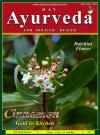 Dec 2024
Dec 2024
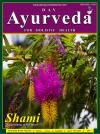 May 2024
May 2024
 September 2022
September 2022
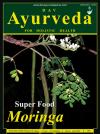 April 2022
April 2022
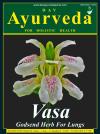 October 2020
October 2020
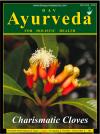 Jan 2020
Jan 2020
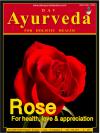 June 2019
June 2019
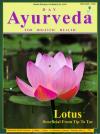 January-February 2019
January-February 2019
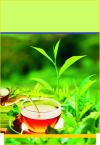 Augest-September
Augest-September
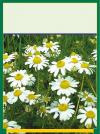 April 2018
April 2018
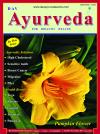 November 2017
November 2017
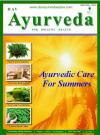 June 2017
June 2017
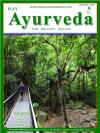 November 2016
November 2016
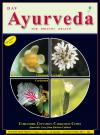 September 2015
September 2015
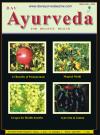 March 2015
March 2015
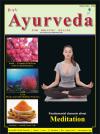 July 2014
July 2014
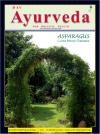 January 2014
January 2014
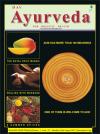 July2013
July2013
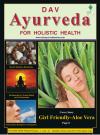 March 2013
March 2013
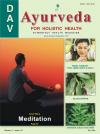 May 2012
May 2012
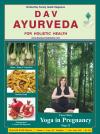 May 2011
May 2011
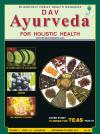 Sep 2010
Sep 2010
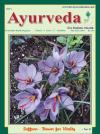 Jun 2010
Jun 2010
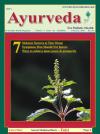 Feb 2010
Feb 2010
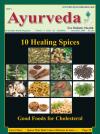 December 2009
December 2009
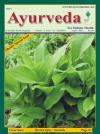 August 2009
August 2009
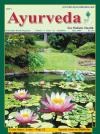 June 2009
June 2009
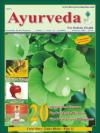 Feb 2009
Feb 2009
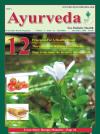 December 2008
December 2008
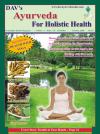 October 2008
October 2008
 March 2008
March 2008
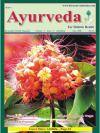 July 2008
July 2008
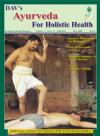 May 2008
May 2008